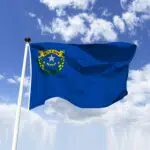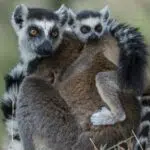Samhain, which begins at nightfall on October 31 and continues until sunset on November 1 every year, is considered one of the most important festivals of the ancient Celtic religion. Samhain is considered to be the time when gods become visible to humankind, and they tend to play tricks on their worshipers. This day used to be a day of fear and danger. Sacrifices were one of the vital rites of the festival as Celts believed they were essential to prevail over the perils before them that the deities could have laid down.
History of Samhain
For the ancient Celts, Samhain was an agricultural festival that marked the time when summer ended, and people took stock of the food before winter. With the end of the harvest season, it was also considered a time of supernatural intensity when the forces of darkness walked on Earth.
Ancient Celtic people used to build large bonfires, hoping to please the gods who would safeguard their livestock and harvest in return. It is also a festival of separation between summer and winter, the light and the dark. It was believed that the normal order of the universe is suspended during Samhain. The barrier between the physical world and the spirit world ceased to exist during this day, which allowed for communication between humans and spirits.
To avoid the spirits, Celts disguised themselves in costumes that consisted of animal heads, skins, and horns so that spirits would consider them fellow supernatural beings and not humans. Animals were sacrificed to please the Celtic deities, and people used to take coals from the central fire of bonfires to light their hearths.
In the 7th century, Pope Boniface IV created All Saints Day, which a century later was moved to November 11 — it acted as a Christian substitute to Samhain. Before the saintly celebration was observed on the day of All Hallows Eve or Halloween. From Celtic regions, the holiday started to spread to other places. By the 1800s, the fall festival which marked the seasonal harvest started to have Halloween elements and Irish immigrants, who were escaping the Potato Famine, brought many Halloween traditions to America, which popularized this festival.
Samhain timeline
Pope Boniface IV declares All Saints Day, which a century later is moved to November 11.
The earliest mention of Samhain in literature states that Samhain is marked by great gatherings and feasts.
The fall festival, which marks the seasonal harvest, starts to adopt Halloween elements; Irish immigrants also bring many Halloween traditions to America, making the festival popular among the people.
Trick-or-treating for candy becomes one of Halloween’s most popular activities.
Samhain FAQs
Which god is Samhain?
Samhain is considered the ‘god of darkness.’
Is Halloween the same as Samhain?
Though Halloween traditions can be traced back to the practices during Samhain, both festivals are different. Samhain is a pagan festival, while Halloween is a secular celebration.
What does Samhain mean?
In modern Irish, Samhain means “summer’s end.”
Samhain Activities
Honor nature
Samhain is a celebration of the changing seasons and the end of the harvest season. Honor nature on this day by appreciating its cycle.
Put on a fancy costume
Wear an exotic costume and host or attend a party. Don’t be afraid to try on something different and enjoy the day with loved ones.
Understand the meaning behind the festival
Research the origins as well as the evolution of the festival. Learn about its significance to believers and society at large.
5 Interesting Facts About Samhain
Samhain created zombies
During Samhain, people told stories about the dead man returning from the underworld to burn people to death.
Human heads were used as decorations
Irish people used to carve demonic faces into turnips to scare away evil spirits, but before turnips, Celtic warriors used to behead enemies and mount their heads in villages to protect people from evil.
Costumes were worn for protection
Ancient Irish people wore costumes and masks, disguised as spirits, to protect themselves from supernatural attacks.
Children could’ve been sacrificed
According to the “Book of Invasions,” people used to sacrifice two-thirds of their children, corn, and milk to supernatural forces during Samhain.
The forerunners of trick-or-treaters
In the 1500s, people in Ireland, Scotland, and Wales used to disguise themselves as demonic beings and went from door to door to collect food for the feast.
Why We Love Samhain
It is a celebration of nature
Samhain is a harvest festival with pagan origins. It celebrates the end of the harvest season and the arrival of winter and is about halfway between the autumn equinox and winter solstice.
It brings the community together
The rituals of Samhain are communal in nature. On this day, people make merry by wearing costumes and trick-or-treating.
It has a rich history
Samhain has an ancient Celtic history and is connected with several significant events in Irish mythology. The festival changed as it reached different nations, which makes it an even more interesting event.
Samhain dates
| Year | Date | Day |
|---|---|---|
| 2025 | October 31 | Friday |
| 2026 | October 31 | Saturday |
| 2027 | October 31 | Sunday |
| 2028 | October 31 | Tuesday |
| 2029 | October 31 | Wednesday |

















